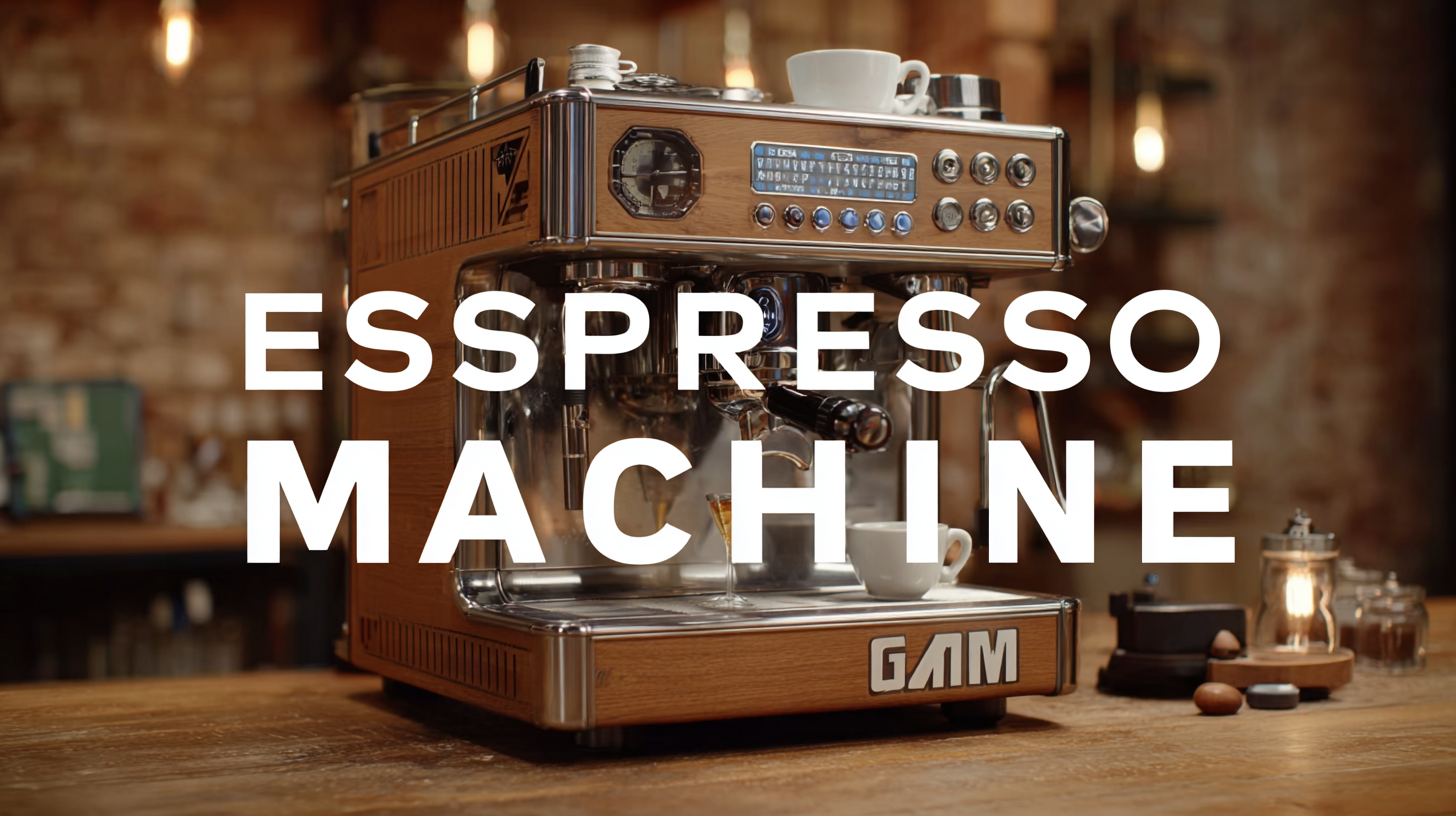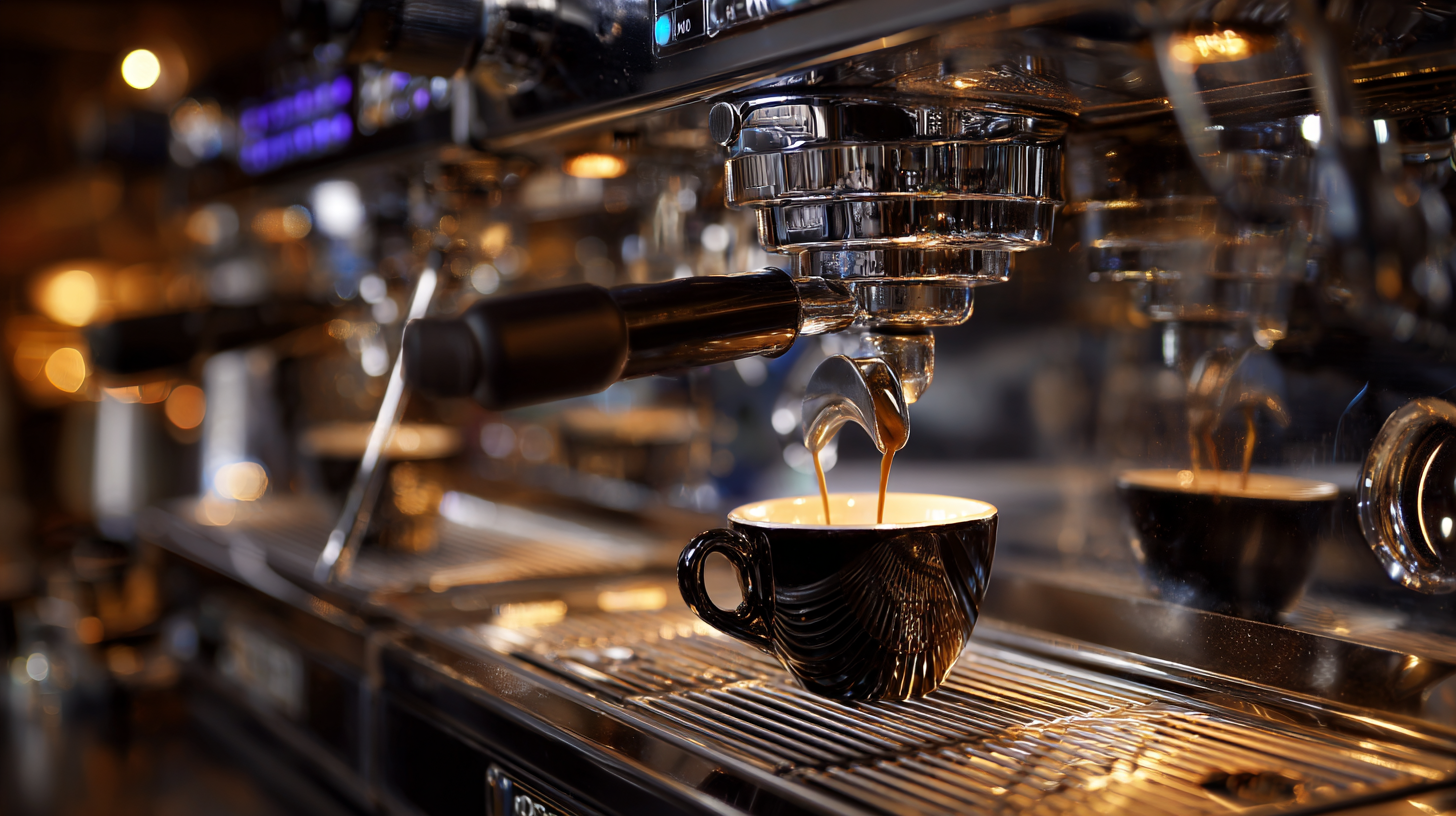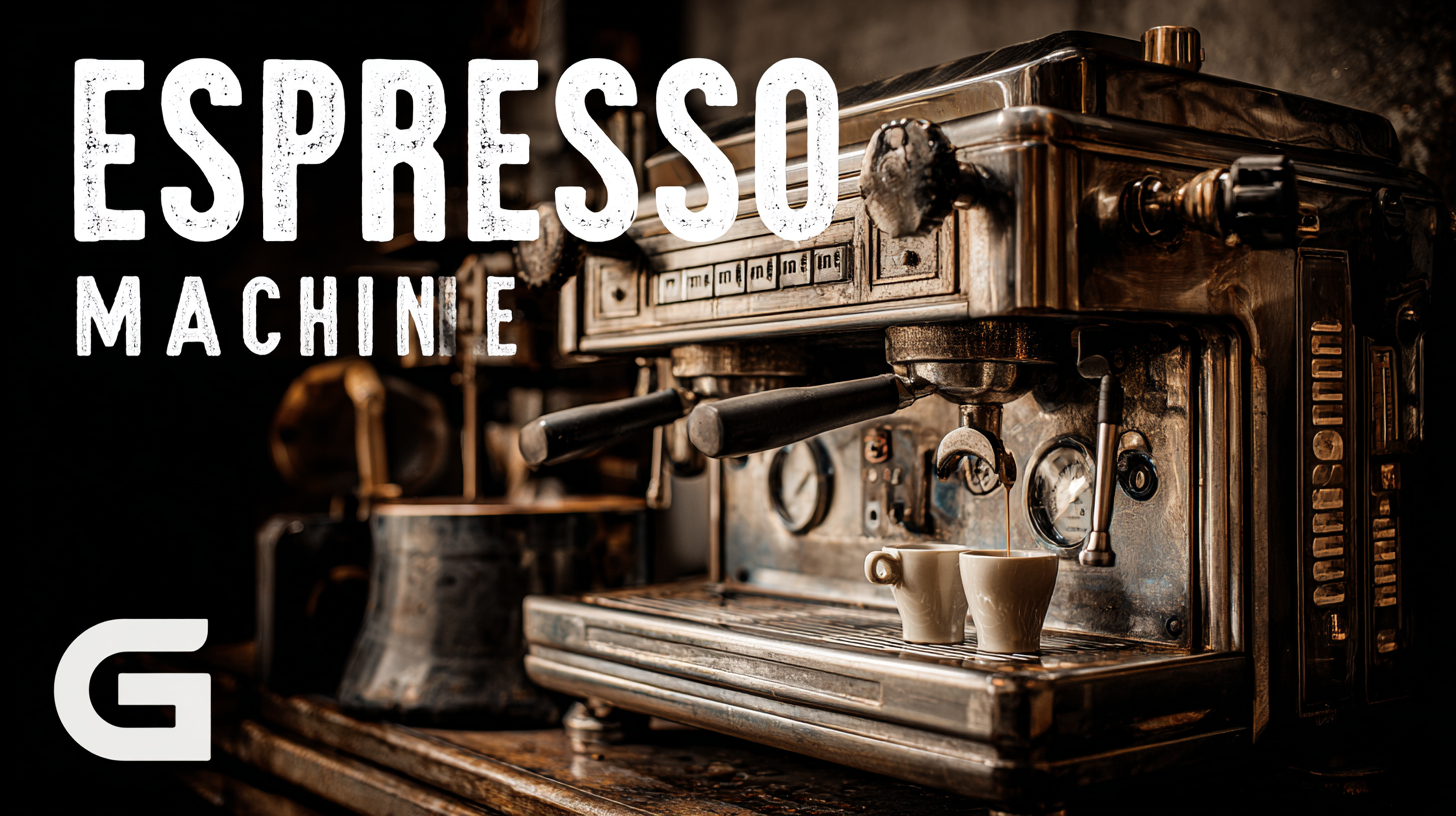

The Ultimate Guide to Choosing the Best Espresso Machine for Global Buyers
In the quest for the perfect cup of coffee, the espresso machine stands as a pivotal device for both home baristas and professional cafes alike. This guide delves into the latest technology trends poised to shape the espresso machine market in 2025, highlighting innovative features that enhance the brewing experience.
 From enhanced temperature control systems to user-friendly interfaces, these advancements not only improve the quality of espresso but also cater to the diverse preferences of global buyers. We will explore the myriad benefits of different types of espresso machines, empowering consumers to make informed choices that align with their needs and lifestyle.
Whether you are a seasoned espresso enthusiast or a newcomer to the world of coffee brewing, understanding these trends and benefits will be crucial in selecting the best espresso machine for your coffee journey.
From enhanced temperature control systems to user-friendly interfaces, these advancements not only improve the quality of espresso but also cater to the diverse preferences of global buyers. We will explore the myriad benefits of different types of espresso machines, empowering consumers to make informed choices that align with their needs and lifestyle.
Whether you are a seasoned espresso enthusiast or a newcomer to the world of coffee brewing, understanding these trends and benefits will be crucial in selecting the best espresso machine for your coffee journey.
Understanding Different Espresso Machine Types: Which One Suits You?
When it comes to choosing the right espresso machine, understanding the different types available is crucial. From manual to semi-automatic, automatic, and super-automatic machines, each caters to different preferences and skill levels. Manual machines require more involvement and are perfect for purists who enjoy the art of crafting espresso. On the other hand, semi-automatic machines strike a balance, offering some automation while still allowing you to control the brewing process.
Tip: Before making a purchase, consider how often you’ll use the machine and your comfort level with coffee-making techniques. Beginners might prefer a semi-automatic or automatic machine, as they often come with built-in grinders and steam wands for frothing milk, greatly simplifying the process.
For those who value convenience, super-automatic machines provide a one-touch system for brewing espresso without much effort. They are ideal for busy lifestyles but often come with a higher price tag.
Tip: Don't forget to check the maintenance requirements of each type. Some machines need regular cleaning and descaling to maintain optimal performance, while others have self-cleaning functionalities, saving you time and effort in the long run.
Key Features to Look for in Espresso Machines for Every Skill Level
When selecting the ideal espresso machine, it’s essential to consider the key features that cater to your skill level. Beginners should look for user-friendly machines with clear controls and automatic features that simplify the brewing process. A model with a built-in grinder can be particularly beneficial, ensuring a fresh grind every time and taking the guesswork out of selecting the right coffee grind size.
For intermediate users, a machine that offers manual controls can enhance creativity and experimentation. Look for options that allow temperature adjustment and pressure control, as these features are crucial for perfecting your espresso extraction. Additionally, machines with dual boilers can enable simultaneous brewing and steaming, making it easier to craft lattes and cappuccinos without waiting.
Advanced users may want to consider high-end espresso machines with advanced technology, such as PID temperature control and customizable brewing profiles. These features allow for precise adjustments that can elevate the quality of the espresso. When investing in an espresso machine, also pay close attention to the build quality and materials, as longevity and performance are paramount for serious espresso enthusiasts.

Comparing Manual, Semi-Automatic, and Fully Automatic Espresso Machines
When choosing the best espresso machine, understanding the differences between manual, semi-automatic, and fully automatic options is crucial for global buyers. The coffee consumption trends in North America and Europe emphasize a preference for high-end products, reflecting a growing demand for quality home brewing experiences. Reports indicate that the global coffee machine market is expanding, with significant contributions from regions like Foshan, which have transitioned from OEM manufacturing to launching their own brands. This evolution highlights the importance of innovative designs and features tailored to the sophisticated tastes of coffee enthusiasts.
Consumer reports show that many buyers are seeking machines that not only deliver superior coffee quality but also offer user-friendly controls and versatility. The recent evaluations of various espresso machines revealed that both semi-automatic and fully automatic models excel in speed, temperature control, and milk frothing capabilities. With advancements in technology, such as integrated grinders in fully automatic machines, the offerings now cater to a wide range of skill levels, making it easier for novices and experts alike to enjoy café-quality coffee at home.

Budget Considerations: Finding the Best Value for Espresso Machines
When selecting the right espresso machine, budget considerations play a pivotal role for global buyers. According to the Specialty Coffee Association, the average home espresso machine can range from $100 to over $2,500, depending on the features and build quality. For those starting their coffee journey, entry-level machines around the $200 mark can provide decent performance without breaking the bank, offering essential features like a steam wand for frothing milk and a pressure gauge. However, investing in a mid-range espresso machine priced between $500 and $1,000 can significantly enhance the brewing experience, often resulting in better temperature stability and extraction consistency.
Moreover, it’s essential to consider long-term value rather than just the upfront cost. A report by Market Research Future predicts that the espresso machine market will reach a valuation of $1.55 billion by 2027, emphasizing the growing demand for quality home brewing solutions. Therefore, while a lower initial investment might seem appealing, it’s crucial to evaluate durability, warranty, and customer reviews to ensure that your selected model will serve you well for years to come. This approach not only maximizes your budget but also elevates your espresso experience at home.
The Ultimate Guide to Choosing the Best Espresso Machine for Global Buyers - Budget Considerations: Finding the Best Value for Espresso Machines
| Espresso Machine Type | Price Range (USD) | Key Features | User Experience Level |
|---|---|---|---|
| Manual Espresso Machines | $100 - $500 | Control over brewing, durable, customizable | Intermediate to Expert |
| Semi-Automatic Machines | $300 - $1,500 | Quality brew, variety of features, less manual work | Beginner to Intermediate |
| Automatic Espresso Machines | $500 - $2,000 | Consistency, one-touch brewing, built-in grinders | Beginner to Intermediate |
| Super-Automatic Machines | $1,000 - $4,000 | All-in-one functionality, ease of use, customizable settings | Beginner to Advanced |
| Pod Coffee Machines | $50 - $300 | Convenience, variety of flavors, quick cleaning | Beginner |
Essential Maintenance Tips for Longevity of Your Espresso Machine
When investing in an espresso machine, understanding how to maintain it for longevity is crucial. According to a study by the Specialty Coffee Association, proper maintenance can extend the life of your machine by up to 20%. Regular cleaning is a fundamental practice. It's recommended to purge the steam wand and clean the group head after each use to prevent milk residue and coffee oils from building up. Additionally, descaling your machine every three to six months, depending on water hardness, can prevent mineral buildup that negatively impacts performance and flavor extraction.
Another vital aspect is to monitor the water quality. Research from the Specialty Coffee Association indicates that water contaminants can adversely affect both machine durability and the taste of your espresso. Using filtered water can significantly decrease deposits, ensuring a cleaner brewing process. Moreover, replacing worn-out parts such as gaskets and shower screens at the first sign of wear can prevent larger issues down the line, thus saving costly repairs and ensuring your espresso machine consistently produces high-quality beverages for years to come.